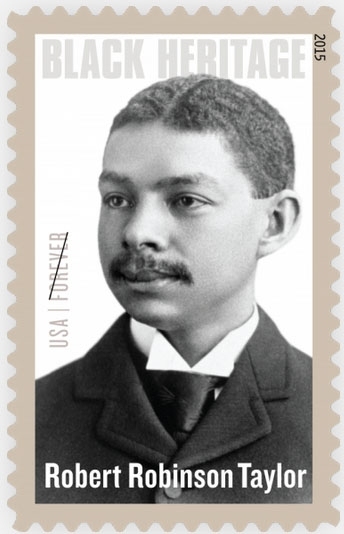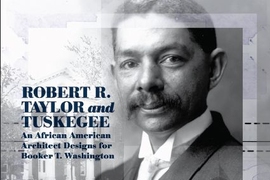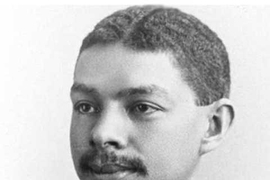The U.S. Postal Service honored one of MIT’s own today, issuing a stamp to honor architect and educator Robert Robinson Taylor. A member of the Class of 1892, Taylor was MIT’s first African-American graduate, and is believed to be the country’s first academically trained black architect.
Among other accomplishments, Taylor supervised the design and construction of the Tuskegee Institute in Alabama — now Tuskegee University — while also overseeing the school’s programs in industrial education and the building trades.
MIT President L. Rafael Reif discussed Taylor’s contributions in remarks at today's dedication ceremony at the National Postal Museum in Washington.
“As we honor the legacy of Robert Taylor, today’s ceremony reminds us that he was a builder … not only of structures, but of communities … and an architect who designed not only a campus of national importance … but a more promising future for generations to come,” Reif said. “Robert Robinson Taylor truly represents the best of MIT.”
Taylor, who was born in North Carolina in 1868, learned carpentry and construction from his father, a former slave. After working as a construction foreman for a few years, he moved to Boston in 1888, and threw himself into his MIT studies. He took as many as 10 courses per semester, earning honors in trigonometry, architectural history, differential calculus, and applied mechanics.
After graduating from MIT’s architecture school — the first in the U.S. — Taylor accepted an offer from educator and activist Booker T. Washington to work at the Tuskegee Institute.
At Tuskegee, he had an enormous impact — first by establishing a beginning architecture curriculum, which helped graduates enter collegiate architecture programs or win entry-level positions in architectural offices. He raised the sights of African-American students, encouraging them to look beyond work as builders and carpenters to professional roles as designers and architects. His second major contribution at Tuskegee was designing and building major campus structures over a 30-year period, creating state-of-the-art buildings where cabins once stood.
Beyond Tuskegee, Taylor designed academic and commercial buildings and helped found the Booker Washington Agricultural and Industrial Institute in Liberia. After he retired in 1932, Taylor was involved in public service and advocacy until his death in 1942.
Taylor spoke at MIT’s 50th anniversary celebration in 1911, summarizing what his MIT training helped bring to Tuskegee: “the love of doing things correctly, of putting logical ways of thinking into the humblest task, of studying surrounding conditions, of soil, of climate, of materials and of using them to the best advantage in contributing to build up the immediate community in which the persons live, and in this way increasing the power and grandeur of the nation.”
Tuskegee named its architecture school after Taylor in 2010.










